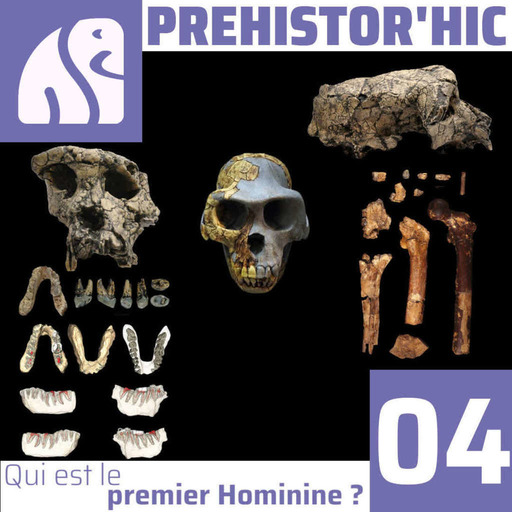
D'où venons-nous ?
Cette question sur nos origines soulève beaucoup de débats au sein de la communauté scientifique.
Parmi les 3 candidats potentiels au titre de plus ancien représentant de la lignée humaine, un seul consensus se dessine : ce n'est pas si simple de le déterminer.
Pourquoi y-a-t-il débats sur le premier être humain ?
Nous vous laissons le découvrir dans cet épisode.
Durée : 38:30 | Publié le : 02/08/23
Bibliographie :
Grand débat CNRS, YouTube, Aux origines de l’Homme, 2017.
G. Daver et al., « Postcranial evidence of late Miocene hominin bipedalism in Chad”, 2022.
Michel Brunet, « Sahelanthropus tchadensis dit « Toumaï » : le plus ancien membre connu de notre tribu », 2020.
Fuss et al., « Potential hominin affinities of Graecopithecus from the Late Miocene of Europe”, pLos ONE, 2017.
Michel Brunet et al., « Toumaï, Miocène supérieur du Tchad, le nouveau doyen du rameau humain ».
Michel Brunet et al., « A new hominid from the Upper Miocene of Chad, Central Africa”, 2002.
Marc R. Meyer, “Knuckle-walking in Sahelanthropus? Locomotor inferences from the ulnae of fossil hominins and other hominoids, 2023.
Martin Pickford, Brigitte Senut, et al., “Bipedalism in Orrorin tugenensis revealed by its femora”, 2002.
Peter A. Stamos et al., “Hominin locomotion and evolution in the Late Miocene to Late Pliocene”, JHE, 2023.
Tim D. White et al., “Ardipithecus ramidus and the Paleobiology of Early Hominids”, 2009.
Senut, « Orrorin tugenensis et les origines de l’homme : une synthèse », 2020.
Yoshihiro Sadawa et al., “The age of Orrorin tugenensis, an early hominid from the Tugen Hills, Kenya”, 2002.


 Emissions
Emissions











